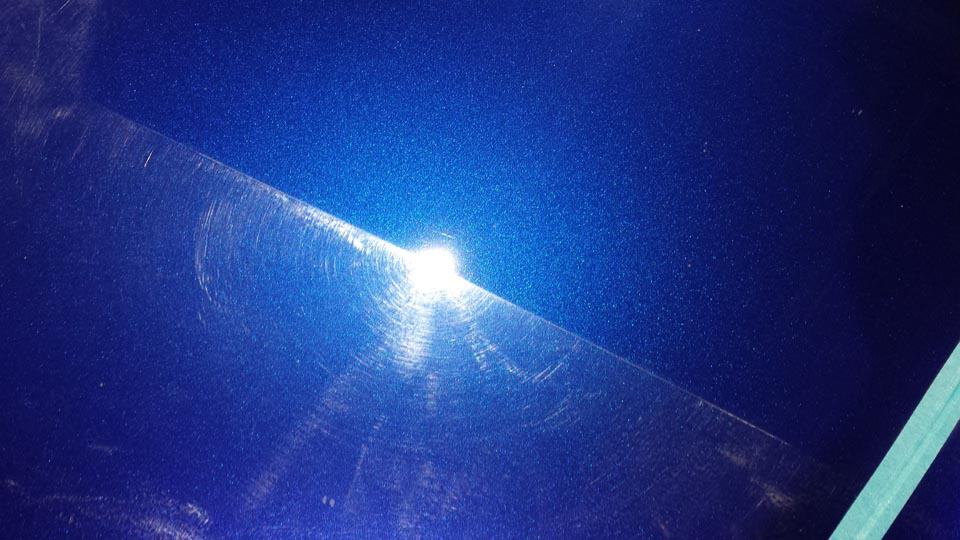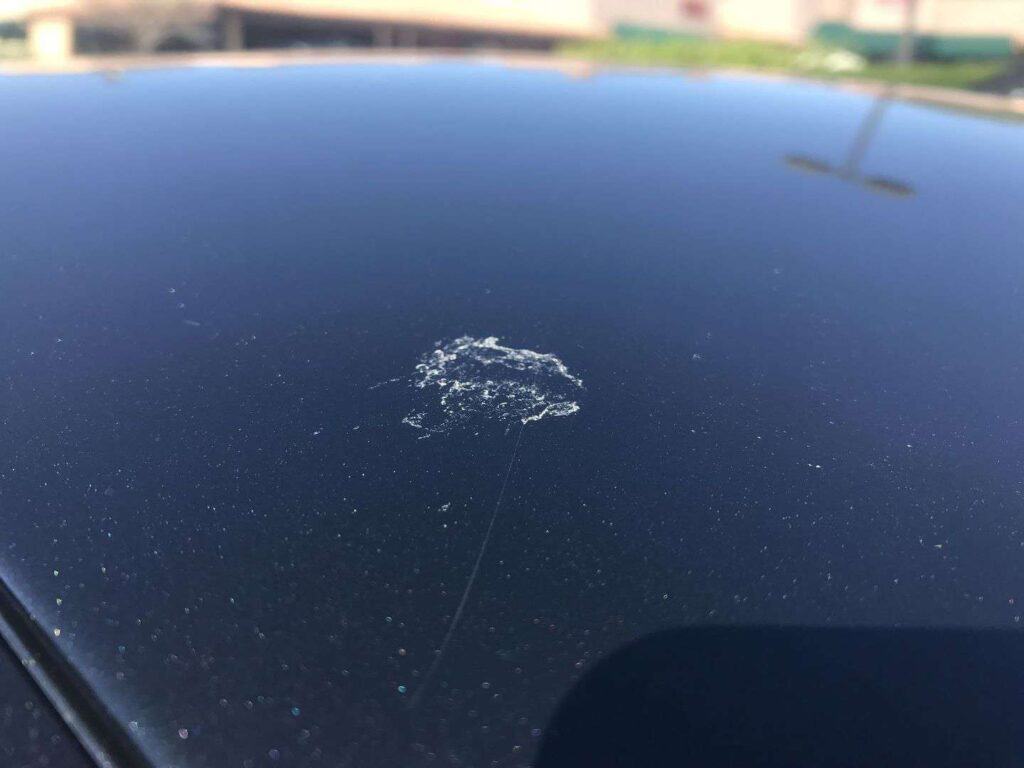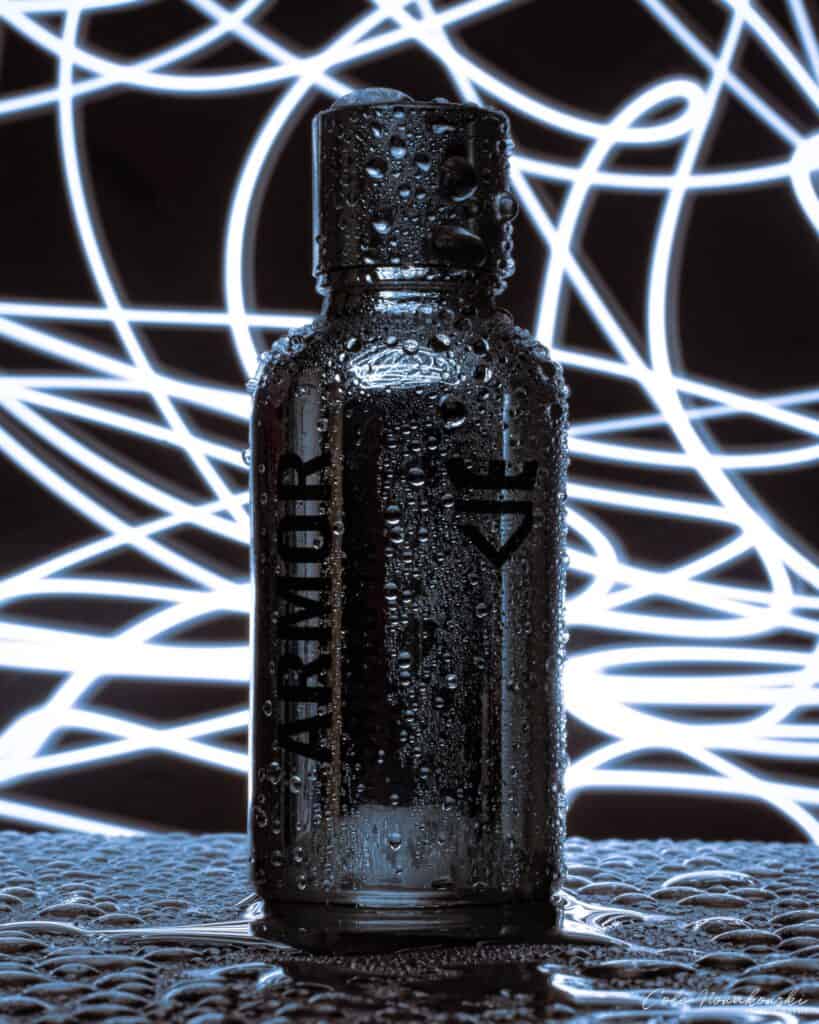Ask a group of auto detail experts whether DIYers should attempt pro paint corrections on their own, and you’ll receive a wide array of opinions on the matter. We’ve heard everything from, “With the right tools, research, and a steady hand, it shouldn’t be an issue…” to, “Are you fucking high?! No amateur should ever attempt paint correction on their own!”
No matter the response, one thing remains constant: Paint correction is no simple task. The removal of paint swirl marks, fading, oxidation, and marring in clear coat requires a significant amount of time, patience, equipment, and preparation, none of which can be skipped or hurried.
But for those who take the plunge, the rewards far outweigh the hurtles, especially when it comes to saving money.
Following the same approach as our Beginners Guide to Car Detailing (Like a Pro) series, today’s article will begin by covering a few facts about paint correction. We will also go over some important tools and techniques, talk about recognizing the warning signs of a failing clear coat, and outline the core paint correction steps. So grab your gloves and let’s get to correcting the situation!
What is Paint Correction?

Paint correction is a multi-stage process that involves removing imperfections in automotive clear coat (a.k.a. finish) and restoring it to as close to original condition as possible. Opposed to a straightforward DIY paint correction, professional paint correction involves a few additional steps, which we’ll describe in detail a bit later.
For all you DIY fans out there, the following steps offer a generalized glimpse at paint correction procedures:
- Cleaning/Removing debris via clay bar
- Wet sanding/Leveling
- Waxing/Polishing
- Resealing the Paint
What Causes a Clear Coat to Fail?

- Spider webbing: It may sound like superhero splatter, but the term “spider webbing” actually refers to the swirl marks commonly found in clear coat. This is typically the result of improper circular washing methods, the use of dirty or overly abrasive towels, automated car washes, or high pH automotive shampoos.

- Fine scratches: Scratches can be caused by many forms of contact. From backing into an overgrown bush, to gale-force winds and airborne debris, all the way to your drunk uncle keying the wrong car, clear coat scratches are about as unavoidable and unappealing as it gets.

- Water spots: While some may assume that water spots are little more than a cosmetic inconvenience, certain kinds of water etching can lead to permanent damage. Water that contains salt, road grime, or high levels of minerals is especially dangerous, as it has the ability to slowly eat into clear coat, and becomes extremely difficult to remove when baked in the sun.

- Animal crap: Damn those birds, squirrels, and other tree-dwelling critters and their airborne turds of impending doom. While it may seem like a royal pain in the ass, washing or wiping away animal excrement the moment you detect it will make a massive difference in the longevity of your car’s clear coat. Failure to do so will only allow the acids within the animal poo to etch into your vehicle’s external surfaces, thus causing the need for an even lengthier round of paint correction.

- Inexperienced Detailers: There’s a simple truth here somewhere… oh yeah! There are entirely too many people in the auto detailing industry who have zero business being near a car’s clear coat. Poorly calibrated high-speed polishers and buffing tools, the use of overly abrasive polishing compounds, and entirely too much pressure are all too commonplace in the auto detailing scene. Now as for licking sideview mirrors… let’s just say that some people have clean intentions, but remain hampered by filthy minds.
Rubbing Things the Wrong Way

Photo Credit: Columbia Pictures (Sony Pictures Entertainment)
While Mr. Miyagi’s method of washing and waxing is well recognized, his technique is just as known for its damaging tendencies as its cleaning and buffing powers. Is it good for teaching karate skills? Sure. But when it comes to safely decontaminating a car’s clear coat… well that’s a whole other story.
When a car is being washed by hand, or an automatic car wash, soap and pressure are applied to cut into any caked-on residue or contamination. The scuzzy surface is then agitated with a cloth or some form of scrubbing media, before the human hand or mechanized arm moves on to the next area.
The issue, is that humans and automatic car washes alike tend to grind whatever grime is sitting on the surface into the clear coat. This creates scratches in the clear coat, for without routine rinsing and a separate decontamination water bucket, even a clean microfiber towel can become a weapon of mass destruction during a wash.
Car waxing offers a very similar scenario. While washing a car remains a crucial first step, not all of the debris embedded within the clear coat is removed at this stage. So when the wax-on/wax-off method is implemented later on, this same grinding of loose particles into the paint’s protective layer strikes once more, this time with the help of a waxy bonding agent.
Quick Nerd Note: Although some paint imperfections can be fixed with automotive waxes or paint sealants, they rarely provide a lasting solution. As an auto detailing buddy once explained, “This is like putting duct tape or super glue on an open wound. It’ll work in a pinch, but at some point you are going to want to seal that sucker up.”
Why is Paint Correction Important?

A properly paint corrected painted surface is impressive to see when compared to what the clear coat looked like prior to leveling.
In order to truly remedy automotive detailing mistakes, and “buff-out” any marring or fading on a car’s clear coat, a paint correction procedure must be implemented.
However, there’s this dated assumption that paint correction is little more than a visual enhancement. Paint correction does far more than just apply some shine to a painted surface. It fills in the gaps and scratches, lifts flaking clear coat, and prepares the surface for protective products like ceramic coatings.
Quick Nerd Note: When your paint’s clear coat is damaged, it is just a matter of time before dirt and debris penetrate the surface and start eating into the pigmented basecoat. In the past, this has been linked to paint chipping, sun damage, premature fading, oxidation, and other unsavory issues.
The DIY Paint Correction Process

If you’ve made it this far into the article, chances are you are hell-bent on attempting a DIY paint correction fix on your own. It may sound intimidating at first, but minor paint correction procedures are more of a time and labor intensive endeavor than anything.
The following steps will help guide you in the removal of swirl marks/spider webbing, the most common, and easily repairable clear coat imperfection. Any other type of paint damage, including deep scratches and etching, should be carefully inspected and taken to a professional. You don’t want to attempt an advanced paint correction process, only to realize halfway through that you’ve bitten off more than you can chew.
Quick Nerd Note: The steps listed below should be viewed in the same light as ‘The Pirates Code’ in the Pirates of the Caribbean franchise: These really aren’t rules, but guidelines. And when in doubt, consult an auto body expert to determine whether paint correction or a respray is the best course of action.
Step 1: The Preparation Process

Cleaning, and removing contaminants, along with any previously applied waxes, polishes, or sealants must be completed prior to starting any paint correction project.
Before you can even start correcting a vehicle’s paintwork, all of the surfaces must first be cleaned and prepped.
Here are a few of the steps you’ll need to complete when prepping a car for paint correction:
- Wash the car using the two-buckets-and-a-beer method, and utilize a high-quality surface prep shampoo.
- After scrubbing down all of the exterior surfaces, break out a reusable clay bar mitt or towel, along with some clay lubricant, and get to scrubbing. This will help remove any stubborn particles that may still be embedded in the clear coat, and greatly reduce the risk of marring.
- Once complete, wipe all of the surfaces down with a plush microfiber drying towel, and tape-off any areas you don’t want to see buffed with painter’s tape. This will likely include glass, light lenses, unpainted plastic trim, sensors, and chrome.
Step 2: Leveling

For the next stage, which is the leveling process, you will need an electric polisher or sanding wheel, and a variety of high-quality microfiber cutting pads and cutting compounds in various grades of coarseness. Here, opting to purchase an all-in-one paint correction kit will remove much of the shopping guesswork on your end.
- Apply some cutting compound to a microfiber cutting pad that’s been attached to an electric polisher. (You will start with the most coarse compound and buffing pad, and gradually work your way to finer grits with each completed pass.)
- Replace the microfiber cutting/buffing pad frequently to avoid marring or cutting into the clear coat. Every other body panel is a good rule of wrench.
- Complete this process until you’ve done the entire vehicle. Once complete, attach a milder buffing pad and apply some finer rubbing compound to its surface.
- Repeat the entire procedure until complete, and then repeat it one last time with the finest grit buffing compound and softest pad.
Quick Nerd Note: A professional auto detailer would not use a cutting compound, but would instead opt for a color sanding approach. However, this procedure is by no means intended for the inexperienced, or even intermediate DIY enthusiasts.
Step 3: Polishing

Leveling step completed, you’ll be greeted by a scratch-free, but rather dull-looking finish. This is where the polishing process comes into play, as you seek to both restore shine and fill-in any scratches in the clear coat that may have been caused by the leveling process.
- Start with a brand-new polishing disk and pad, preferably an ultra-soft product that is intended purely for buffing.
- Spread a small amount of ultra-fine polishing compound on the pad. Unlike cutting/leveling compounds, polishing compounds act as more of a lubricant than an abrasive.
- Apply the buffing pad to the clear coat and follow a pattern that adheres to the body lines of the vehicle.
- As you polish one panel at a time, don’t forget to change the pads as necessary, and work until every square centimeter of the clear coat has been polished. Depending upon the amount of leveling that was conducted, you may need to repeat this process another 2-3 times.
Step 4: Sealing the Vehicle’s Exterior

At this point, the paint correction procedure has been completed, and it is now time to protect that pristine exterior. A paint protection procedure will not only reduce the need for this clear coat correction process to be repeated on the regular, but it will also give your car’s exterior enhanced levels of shine and protection.
Traditionally, DIY enthusiasts would apply an automotive wax at this point, an option that does indeed work, but only for a brief period of time, and with limited resistance to scratches and impacts. Today, things like paint sealants, paint protection films (PPF), and nano ceramic coatings have become the go-to paint protection alternative to traditional waxes, and for good reason.
By providing an incredibly hard layer of protection that only needs replacement every few years (as opposed to every couple of weeks or months), products like ceramic coatings have made the need for routine paint correction a thing of the past. And while many auto enthusiasts will swear that PPF products are the best of the bunch due to their levels of longevity and protection, the price associated with their installation and up-front cost is a far cry from what you will pay for a DIY nano ceramic coating like Armor Shield IX.
Parting Shots

When compared to a professional detailer’s $2,000 base price for paint correction services, the value associated with taking DIY swing at this mandatory task becomes all the more obvious. While certain projects should definitely be left to the professionals, the methods we covered today should be more than sufficient for those looking to remove spider webbing swirls/scratches from clear coat.
So give it a shot, and don’t hesitate to reach out if you have any questions. We are always happy to help those who wish to delve deeper into the ever expanding realm of DIY automotive adventures.












7 comments
Buck
I have a black car. Almost 5 years old. Had swirl marks minor scratches around the handles…
Took it to a detailing place for paint correction…
Came back looking really clean and new except I noticed there are a ton of paint chip marks I can see now…
Is this normal in paint correction?
I have a black car. Almost 5 years old. Had swirl marks minor scratches around the handles…
Took it to a detailing place for paint correction…
Came back looking really clean and new except I noticed there are a ton of paint chip marks I can see now…
Is this normal in paint correction?
Jeff Carbine
I like that you said that before you can even start correcting a vehicle’s paintwork, all of the surfaces must first be cleaned and prepped. I will have my car repainted with a new color this week. I will consider this option for auto paint correction. They said it will make your car paint last.
I like that you said that before you can even start correcting a vehicle’s paintwork, all of the surfaces must first be cleaned and prepped. I will have my car repainted with a new color this week. I will consider this option for auto paint correction. They said it will make your car paint last.
Dale Pearl
HI Randy!
That is really going to depend on the specific product used but dissecting this a bit we know that every ceramic coating has a cure time and an aging time. The cure time is typically somewhere between 24 and 72 hours and during that time frame no water or moisture contact whatsoever. Following that you have an aging process that is simply an additional amount of time prior to exposure to cleaning solutions. that time frame is typically between 4 and 7 days. After that first wash is when we advise to first use a ceramic topper so if you were using Armor Shield it would wait 48 hours prior to water exposure. On the 7th day wash the car with a ceramic-friendly shampoo and then after that period of time you can apply a topper. Always wash and dry prior to applying a topper to ensure that you do not trap any dirt between the coating and topper.
HI Randy!
That is really going to depend on the specific product used but dissecting this a bit we know that every ceramic coating has a cure time and an aging time. The cure time is typically somewhere between 24 and 72 hours and during that time frame no water or moisture contact whatsoever. Following that you have an aging process that is simply an additional amount of time prior to exposure to cleaning solutions. that time frame is typically between 4 and 7 days. After that first wash is when we advise to first use a ceramic topper so if you were using Armor Shield it would wait 48 hours prior to water exposure. On the 7th day wash the car with a ceramic-friendly shampoo and then after that period of time you can apply a topper. Always wash and dry prior to applying a topper to ensure that you do not trap any dirt between the coating and topper.
Randy Driver
My ceramic kit comes with a base and top coat how long can/should I wait after base and before top coat
My ceramic kit comes with a base and top coat how long can/should I wait after base and before top coat
Jeff Smith
Thanks,
Car paint correction can make the vehicle look new again.
Thanks,
Car paint correction can make the vehicle look new again.
Camco
It is absolutely necessary to remove any and all residue for proper adherence of any coating product.
It is absolutely necessary to remove any and all residue for proper adherence of any coating product.
Carel Clermonts
Thanks for that but is it necessary to IPA or degrease again between polishing and applying Armor Shield?
I’d think the polishing process will leave some residue preventing the Armor Shield from completely bonding…
Thanks again,
Carel
Thanks for that but is it necessary to IPA or degrease again between polishing and applying Armor Shield?
I’d think the polishing process will leave some residue preventing the Armor Shield from completely bonding…
Thanks again,
Carel